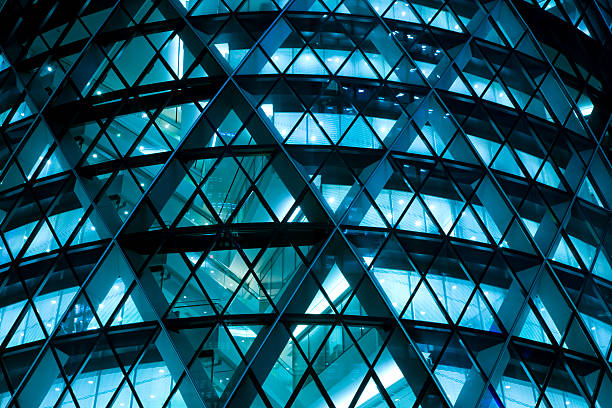Building Energy Conservation Topics: The Importance of Building Energy Efficiency
1. Traditional energy sources
The three traditional energy sources of oil, coal and natural gas are becoming increasingly depleted worldwide. Human beings will have to turn to higher-cost biomass energy, water conservancy, geothermal energy, wind energy, solar energy and nuclear energy, and my country’s energy problem is even more serious.
There are four main problems in my country’s energy development:
①The per capita energy possession and reserves are low.
②The energy structure is still dominated by coal, accounting for about 75%.
The country’s annual coal consumption has exceeded 1.3 billion tons.
③ Uneven distribution of energy resources.
Mainly manifested in the shortage of energy in economically developed areas and the insufficient supply of commercial energy in rural areas, resulting in the transportation of coal from the north to the south, gas from the west to the east, and electricity from the west to the east.
④ The energy utilization efficiency is low.
The end-use efficiency of energy is only 33%, which is 10% lower than that of developed countries.
With the rapid development of urban construction, my country’s building energy consumption has increased significantly year by year, reaching 32% of the total social energy consumption.
In addition, the annual energy consumption of building materials production is about 13%, and the total energy consumption of buildings has reached 45% of the national total energy consumption.
my country’s existing building area is 40 billion square meters, most of which are high energy consumption buildings, and nearly 2 billion square meters of new buildings are built every year, of which more than 95% are still high energy consumption buildings.
If my country continues to implement design standards with a low level of energy conservation, it will leave a heavy burden of energy consumption and governance difficulties.
Huge building energy consumption has become a huge burden on the national economy.
Therefore, comprehensive energy conservation in the construction industry is imperative.
Comprehensive building energy conservation is beneficial to fundamentally promote the conservation and rational utilization of energy resources, and alleviate the contradiction between the supply of energy resources and economic and social development in my country.
It is conducive to accelerating the development of circular economy and realizing sustainable economic and social development.
It is conducive to ensuring national energy security, protecting the environment, improving the quality of life of the people, and implementing the Scientific Outlook on Development in the long run.
Building energy conservation is one of the important links related to my country’s construction of a low-carbon economy, the completion of energy conservation and emission reduction goals, and the maintenance of sustainable economic development.
In order to do a good job in building energy efficiency and complete various indicators, we need to plan carefully, push forward vigorously, and start from the details in a down-to-earth manner.
The work of building energy conservation is complex and arduous. It involves the government, enterprises and ordinary citizens, involves many industries and enterprises, and involves new and old buildings. It is very difficult to implement.
In the initial promotion of building energy efficiency, we must pay energy, cost and price.
Judging from the practical results in the past few years, it is very difficult to complete the tasks and indicators of building energy efficiency by only introducing some simple requirements, measures and methods. out of its crux.
For new buildings to be strictly managed, they must meet building energy efficiency standards, which cannot be vague.

3. Existing buildings
The energy-saving transformation should be carried out with great efforts and many methods, and the pilot experience should be promoted more, and the principle of putting the easy before the difficult, and the public before the private should be adopted.
In the process of house construction, building energy conservation should focus on solving problems such as external wall insulation, window and door insulation, etc. Many building air leakage occurs in this aspect.
In addition, buildings that can utilize solar energy should maximize the use of this resource, and realize the integration of solar energy and buildings in the design process to increase the harmony and aesthetics of the building.
Fully implement reclaimed water utilization and rainwater collection systems, vigorously promote the recycling and utilization of waste building materials and construction waste, so that resources can be fully utilized.
Renovation of existing buildings and household-by-household renovation of heating facilities are more difficult, requiring overall consideration and step-by-step implementation, supported by fiscal and taxation policies, and giving certain subsidies to speed up the progress of energy-saving renovation of existing buildings.
The gradual transformation of existing buildings should be carried out in the order of public buildings, commercial buildings, and residential buildings first, that is, the relatively easy buildings should be transformed first, and then the more complex residential energy-saving problems will be gradually solved.
4. New buildings
As long as the legal system is sound, the standards are matched, and the supporting policies are in the right direction, the energy saving standard of 50% can basically be reached.
However, it is still difficult for many cities to promote the 65% or 75% energy-saving standard, and it is necessary to increase measures in terms of building insulation material management and technical standards.
To achieve the new buildings fully meet the energy-saving standards, can not leave gaps.
Building energy efficiency is a systematic project. In the process of comprehensive promotion, relevant supporting policies and regulations should be formulated, and the enforcement of the mandatory ones should be strengthened.
There should be supporting standards, including technical standards, product standards and management standards, etc., to facilitate supervision and inspection during the implementation process.
For new technologies, new processes, new equipment, new materials, new products, etc., it is necessary to provide support in terms of policies and increase market promotion efforts.
All in all, to do a good job in building energy conservation, as long as relevant departments and governments at all levels cooperate and cooperate closely, my country’s energy conservation goals can be achieved.

China is a big developing country and also a big construction country. The area of newly built houses is as high as 1.7-1.8 billion square meters each year, which exceeds the total annual construction area of all developed countries.
With the gradual progress of building a moderately prosperous society in an all-round way, the construction industry has developed rapidly, and the energy consumption of buildings has increased rapidly.
The so-called building energy consumption refers to the energy consumption of building use, including heating, air conditioning, hot water supply, lighting, cooking, household appliances, elevators and other aspects of energy consumption.
Among them, heating and air conditioning energy consumption accounts for about 60% to 70%. Of the nearly 40 billion square meters of buildings in China, only 1% are energy-efficient buildings, and the rest are high-energy-consuming buildings in terms of building envelopes or heating and air-conditioning systems.
The energy consumption per unit area of heating is equivalent to 2 to 3 times that of developed countries with similar latitudes.
This is due to the poor thermal insulation performance of the building envelope in China, and 2/3 of the heating energy is lost.
However, less than 100 million square meters of new buildings are truly called “energy-saving buildings” every year, and the share of total building energy consumption in China’s total energy consumption has exceeded 27%, gradually approaching 30%.

As China is a developing country with a large population, per capita energy resources are relatively scarce.
The per capita arable land is only 1/3 of the world’s per capita arable land, the water resources are only 1/4 of the world’s per capita arable land, the proven coal reserves only account for 11% of the world’s reserves, and crude oil accounts for 2.4%.
Every year, the solid clay bricks used in new buildings destroy 120,000 mu of fertile land.
Compared with developed countries, the level of material consumption is 10% – 25% higher than that of steel, 80 kg of cement is used per cubic meter of concrete, and the recycling rate of sewage is only 25%.
To achieve sustainable development of the national economy, it is imperative and imminent to implement building energy conservation.
China’s building energy waste is extremely serious, and the growth rate of building energy consumption far exceeds the speed of China’s energy production. Therefore, it is forced to organize a large-scale energy-saving renovation of old houses, which will consume more manpower and material resources.
Actively improving energy efficiency in buildings can greatly alleviate the country’s energy shortage and promote the development of China’s national economic construction.
Therefore, building energy conservation is an important measure to implement sustainable development strategies, achieve national energy conservation planning goals, and reduce greenhouse gas emissions, which is in line with global development trends.





